With object-oriented programming in PHP, you can efficiently organize the structure and logic of your applications. In particular, the creation and destruction of objects play a fundamental role. Constructors and destructors are central components in this process, as they allow you to execute specific logic when objects are created or removed. In this guide, you will learn how to effectively use these powerful tools in PHP.
Key insights
- Constructors (__construct) are automatically called when an object is instantiated and allow for the initialization of properties.
- Destructors (__destruct) are called before an object is removed from memory, allowing you to perform cleanup tasks.
- Default parameters in constructors allow for flexible instantiations of objects.
Step-by-Step Guide
Step 1: Creating a Class
Let's start by defining a simple class named Car, which has at least one property. In this case, it is the make of the car.
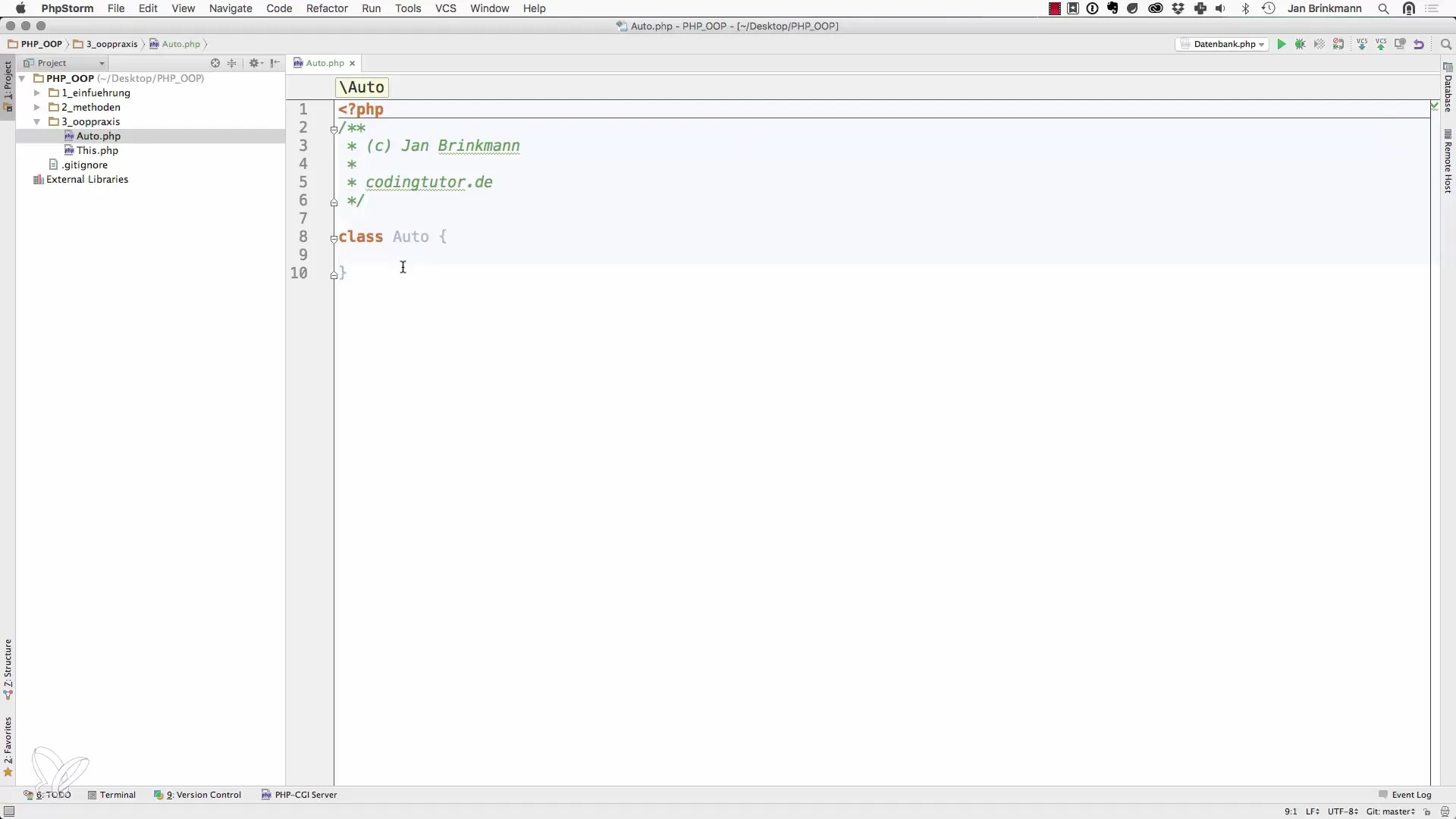
Step 2: Creating a Constructor
For the class Car, we will now add a constructor. This is called when a new object of the class is instantiated. The constructor takes a parameter for the make of the car and assigns it to the property $make.
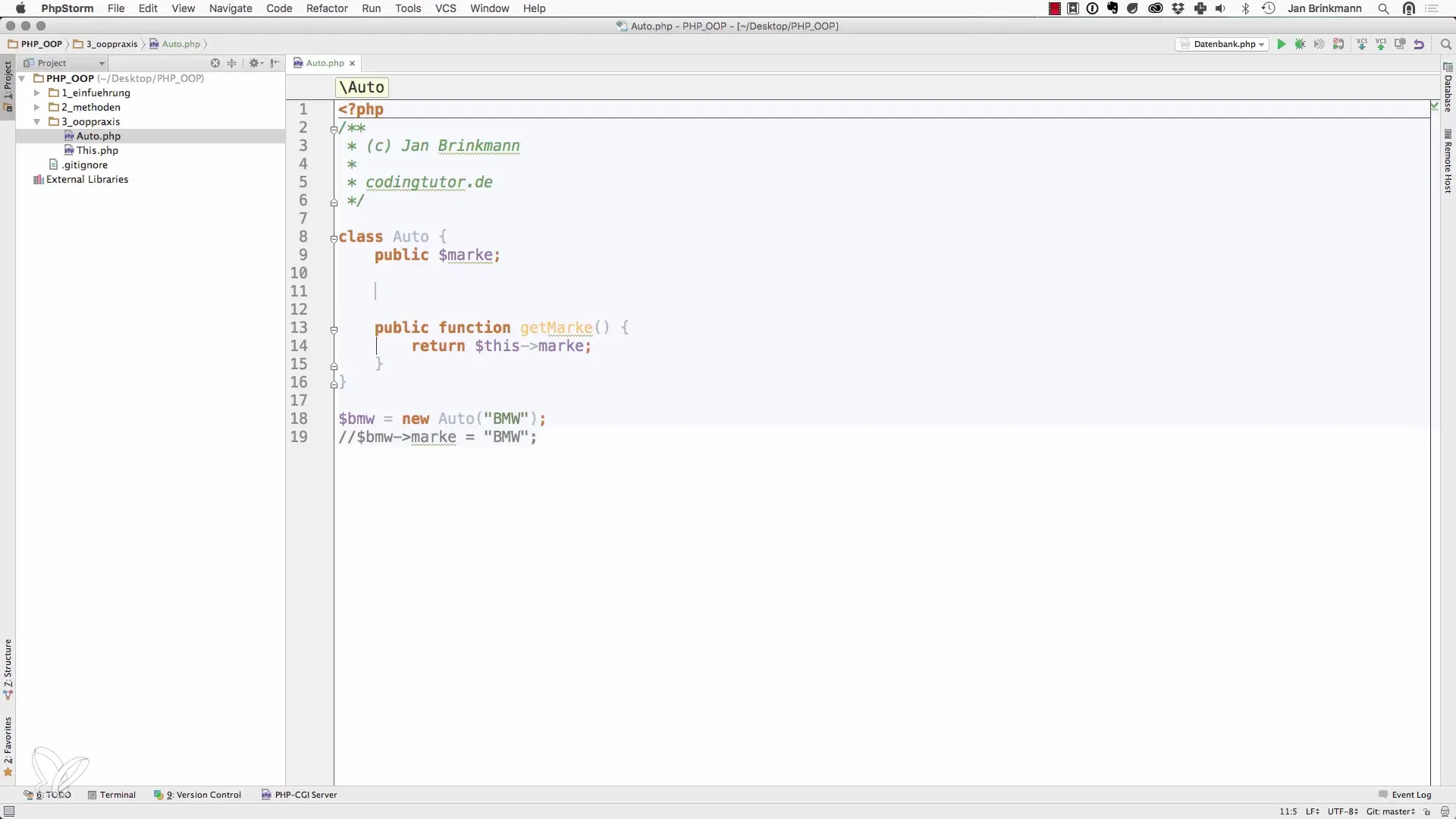
Step 3: Instantiating Objects
Now that we have defined our constructor, we can create an object of the class Car and set the make during creation.
Step 4: Method to Retrieve the Make
To access the make of the car, we define a method getMake that returns the value of the make.
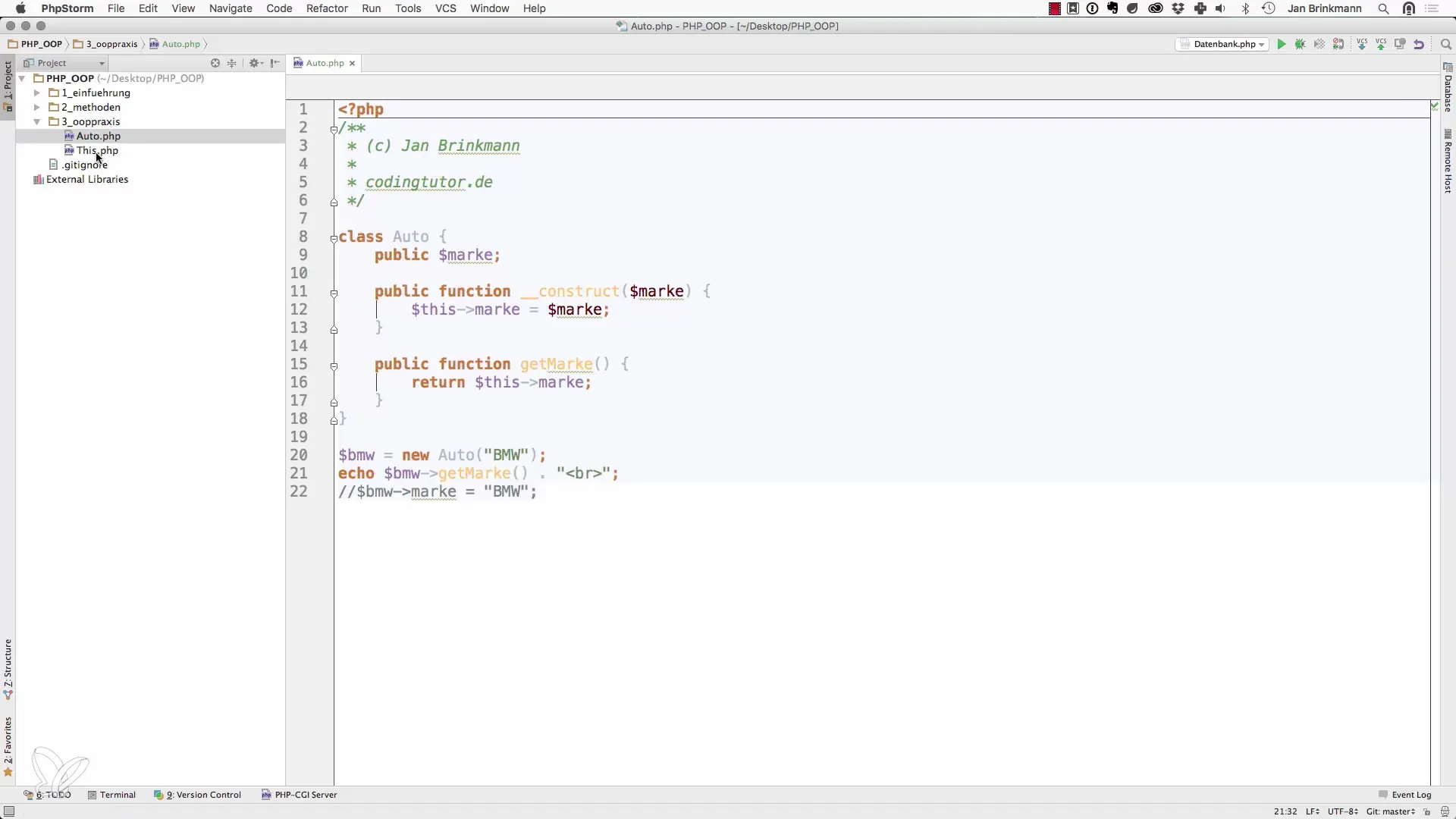
Step 5: Checking the Make
Now we can output the make of the car to ensure that our constructor has worked correctly.
Step 6: Adding Default Values in the Constructor
Sometimes you may want to set a default value if no specific value is passed. You can achieve this by using default parameters in the constructor.
Step 7: New Object Without Parameters
Now you can create another car without specifying the make. The car will automatically have the make "Unknown."
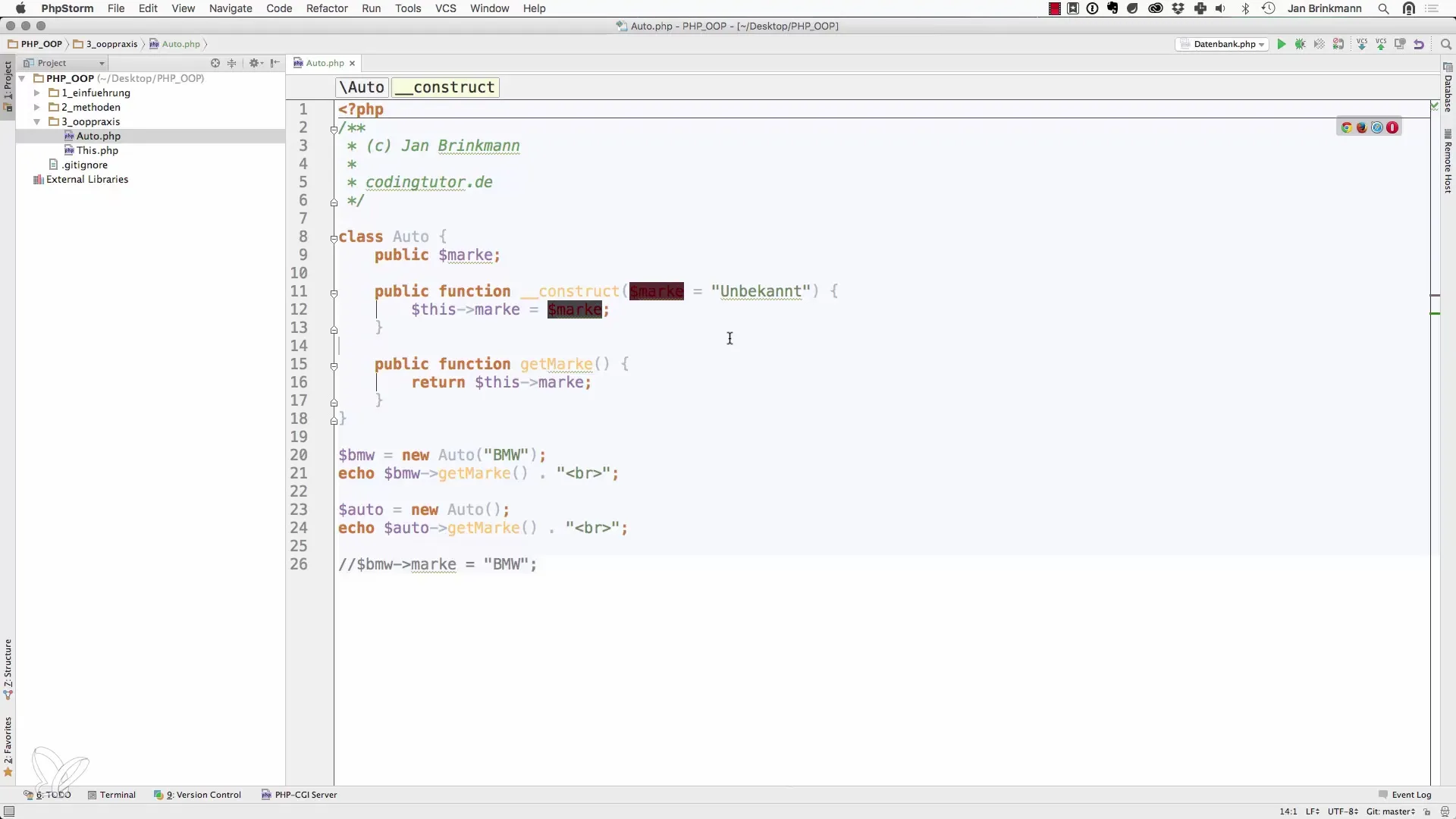
Step 8: Introducing the Destructor
In addition to the constructor, we can define a destructor in our class, which is called when the object is destroyed. This is useful for various cleanup tasks, such as closing database connections.
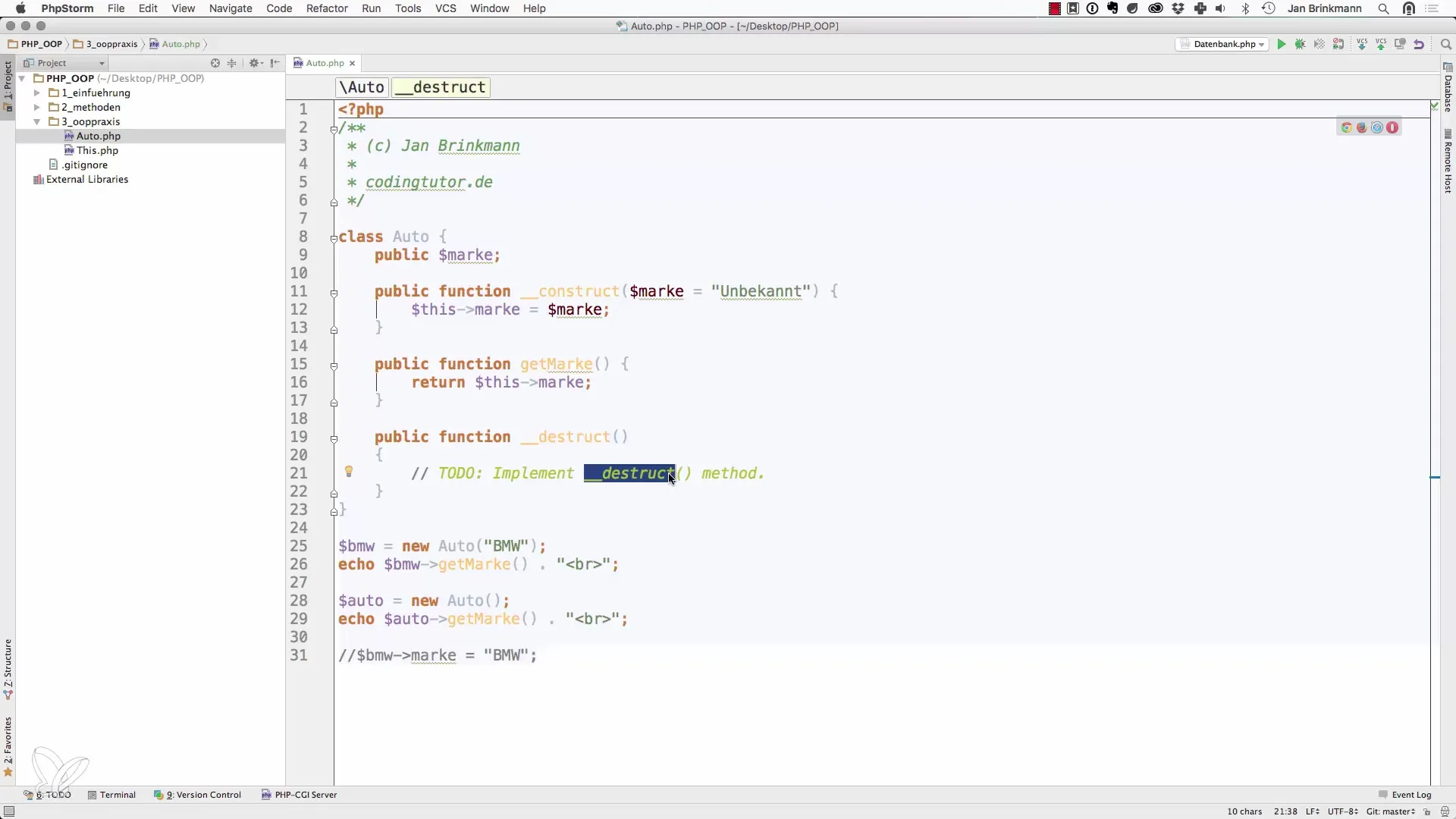
Step 9: Lost References
To show how the destructor works, we delete the reference to our car object. The destructor is called automatically, and the message "Object destroyed" is displayed.
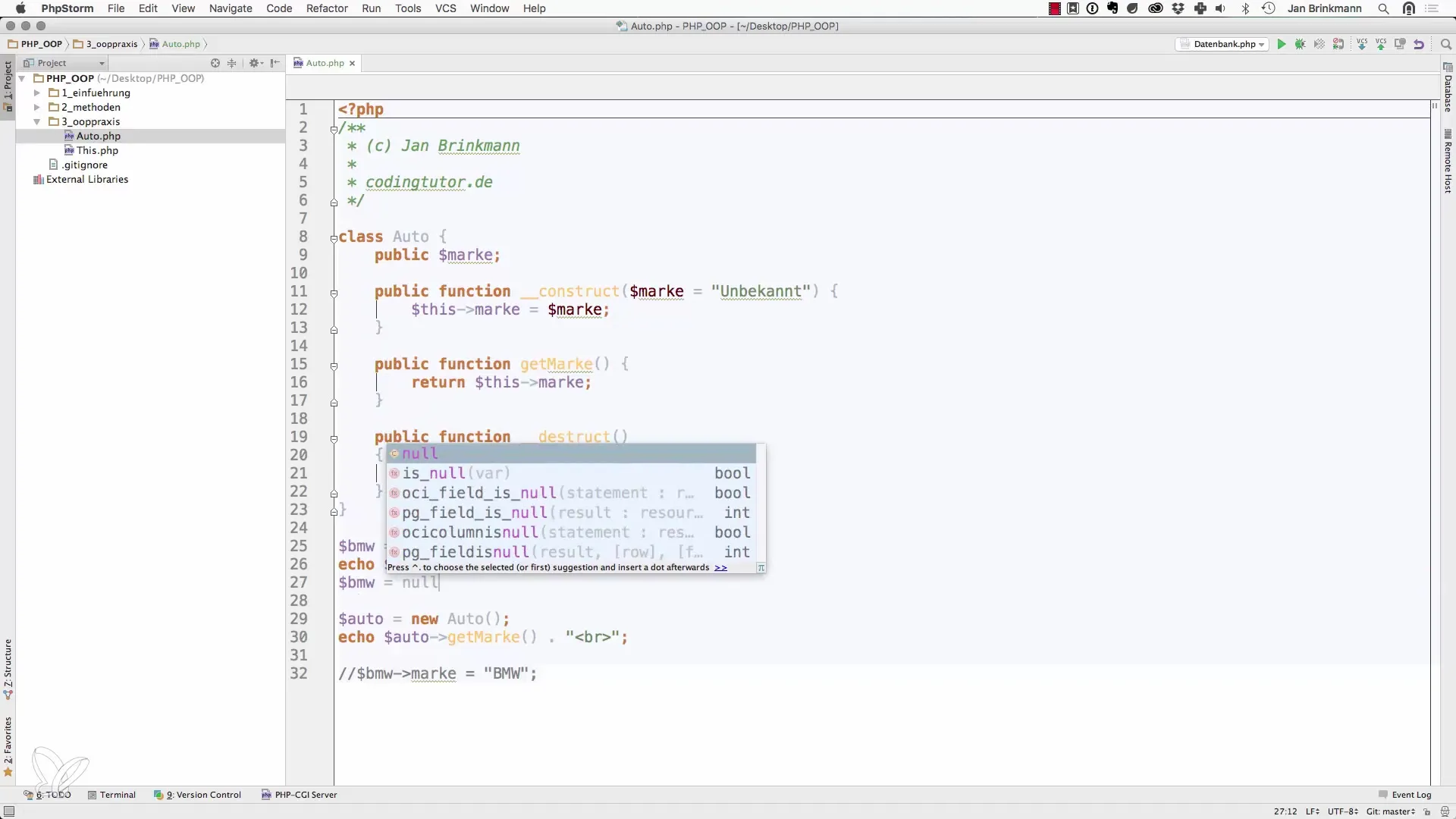
Step 10: Conclusion and Outlook
When all references to an object are lost, the destructor is called. This gives you the opportunity to perform final cleanup tasks before the object is permanently removed from memory.
Understanding constructors and destructors is essential for designing clean, normalized mobile and web applications in PHP. With these tools, you can significantly improve and streamline object creation and management in your application.
Summary – Objects in PHP: Creating and Destroying with Constructors and Destructors
In this guide, you have learned how to effectively use constructors and destructors in PHP to create and manage objects. By implementing these techniques, you can optimize your PHP applications by ensuring that objects are correctly initialized and appropriately cleaned up.
Frequently Asked Questions
What is a constructor?A constructor is a special method that is automatically called when a new object of the class is instantiated.
What is a destructor?A destructor is a special method that is called when an object reference is lost; it is useful for cleanup tasks.
Can I use default parameters in a constructor?Yes, you can use default parameters to give an object a default value if no value is passed.
What happens if I lose the reference to an object?If the reference to an object is lost, the destructor is called, and the object is removed from memory.
In what cases can I use the destructor?The destructor can be used to save data, close connections, or perform other cleanup tasks before the object is destroyed.


